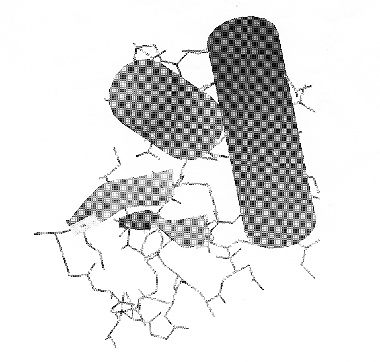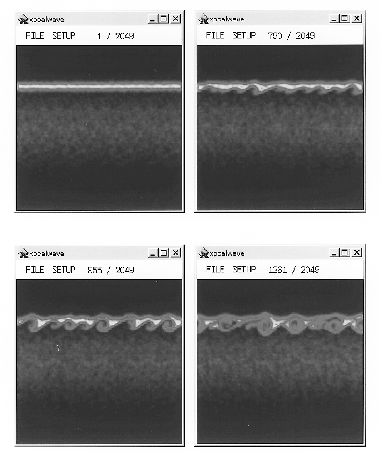 Significance of Parallel
Applications
Significance of Parallel
Applications
 Significance of Parallel
Applications
Significance of Parallel
Applications
In order to build faster and larger-capacity computers with standard components available at a given point of time, a concept of parallel processing using many processors is critical and considered to be a main stream concept for future. In recent years, as hardware technology advances, multi-processor machines and massively parallel machines have gained a relatively popular position. "Parallel processing" is closing in on recognizable real life applications. In particular, the clustering technology for workstations and PCs may be the breakthrough for popularizing parallel machines.
However, unless intended software is parallelized, the resulting speed will not improve over conventional machines. Parallel machines will simply become servers that conveniently process jobs of many users, with the potential for many processors to lie latent, ineffective in terms of speeding-up processing.
Now is the time to establish practical parallel applications. For the development of parallel applications, which cannot be accomplished by simply having hardware available, it is important to accumulate know-how and foster that know-how in a development culture. However, it seems that parallel processing research has focused on hardware, exceeding the attention given to application technology which seriously lags behind hardware development.
 Our Approach
Our Approach
Our goal is to pioneer new applications to broaden the scope of the parallel application field and to verify the value of parallel systems through the development of practical applications. Specifically, we set model problems in computational chemistry and computational biology to carry out the development and verification of large-scale and practical parallel applications.
Computational chemistry and computational biology are currently gaining momentum, and when compared with preceding parallel applications such as fluid dynamics and structural and collision analysis, qualitative breakthroughs can be still expected by parallel processing techniques.
We imposed the following three conditions in selecting our research themes: 1) they should be suitable for large-scale parallelization and expected to considerably improve performance, 2) parallel programs with immediate, highly practical value in each field should be developed, 3) we can present ourselves as professionals in that application field.
Point 1 is a natural starting point for considering parallelization. Point 2 involves the following ideas. To be brief, and risking being misconstrued, we may say that there are only few parallel programs created by parallel researchers in the past that can be used for practical applications. This is because that research places its value on the parallelization performance data and parallel algorithms themselves. There has been and still is a tendency to be universal, placing the burden of unsophisticated jobs such as the extension of functionality and the incorporation of the latest computational models required in actual application development to someone else who would take over the development. However, in order to quickly disseminate the benefit of parallel applications, both sides should swim up to the middle current of a ≥dark deep river≤ which separates parallel technology from application, even if the waters get muddy.
Point 3 compliments point 2. We recruited staff specialized in computational chemistry and computational biology, after these work areas were chosen as our targets. Our team is composed of a world-class researcher of molecular dynamics, an expert of protein secondary structure prediction, a researcher of 3-dimensional protein structure analysis, and a researcher used to be involved in human genome project; a unique group with a wide range of backgrounds and profound specialties. Our laboratory looks like a show case of inter-disciplinary research. Carrying out research considering parallelization performance without disregarding the specialties is, to be honest, hard work, but it brings joy double-fold.
 Outline of Research
Activities
Outline of Research
Activities
Our current research activities will be outlined below.
(1) Parallel systems for 3-dimensional protein structure prediction

(2) Accurate parallel molecular dynamics without cutoff

(3) Parallel accurate phylogenetic tree generator
(4) Parallelization of space-plasma particle simulation
The 3-dimensional protein structure prediction is a difficult theme. Although protein phenomena can be traced for several nanoseconds with molecular dynamics, the folding phenomenon which lasts for approx. 1 millisecond requires at least a million-fold speed-up. We aim to approach protein phenomena which lasts a few microseconds with parallel molecular dynamics, but a direct simulation of the folding phenomenon is still far from our reach. Rather than taking such an approach by sheer force alone, speeding up a stable structure search may be desired by integrating statistics- and knowledge-based techniques in a parallel fashion, including the prediction of partial structures such as a helix and b sheet, the statistical prediction of whether residue exists inside or outside, the coarse dynamics computation with macroscopic particle models, and the inference from known foldings. I, myself, am personally interested in solving a part of the problem by reducing it to a large-scale combinatorial optimization problem (for details, see related article in RWC NEWS, Vol. 3, P.38).
We are always looking for researchers who would work together with us because of difficulties in our research theme. You can also find our research activities on the WWW at http://www.rwcp.or.jp/lab/pdappl.
